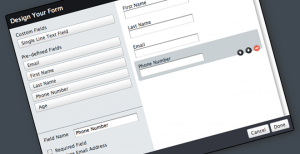How Customer Engagement Data Can Fuel Lead Scoring
 Lead scoring is a systematic, data-based approach to understanding where a lead is at in their buying process. This is done so marketers will have a great knowledge of how to nurture a lead with the right content until they are ready to commit to a purchase. Once the lead is ready to make a decision, marketing can give the lead and their scoring profile to the sales department to complete the process. Learn how customer data can fuel lead scoring.
Lead scoring is a systematic, data-based approach to understanding where a lead is at in their buying process. This is done so marketers will have a great knowledge of how to nurture a lead with the right content until they are ready to commit to a purchase. Once the lead is ready to make a decision, marketing can give the lead and their scoring profile to the sales department to complete the process. Learn how customer data can fuel lead scoring.
The key is engaging the customer in order to extract useful information for scoring. The concept of lead scoring is simple enough, but the practicality of implementing it can be complicated and overwhelming without the necessary technology and engagement tactics to support it. Every lead leaves a trail of information about their buying process on the internet, but without marketing automation and customer engagement it is nearly impossible to absorb all the demographic and behavioral characteristics that describe the potential consumer’s thought process.
One popular approach to use is interactive multimedia to connect with the lead. It engages prospects on a more personal level and it is an extended experience that captures incremental information. This priceless information is necessary to build a more detailed customer profile for lead scoring. Marketing automation enables you to collect data at multiple points throughout the experience, including interactive and passive responses.
It is also possible to collect user-supplied demographic information such as job function, buying authority, budget, or purchasing influences through registration forms, but you can go beyond that by utilizing interactive polling, Q & A and click data. This information is a vital part of the registrant’s profile which can be scored to assess their readiness to make a purchase.
Customer engagement data is easier to collect when a lead has willingly interacted with either the main website or various social networking platforms for a given business. The key is giving them a reason to participate. Ask questions that will spark responses or make potential customers offers that will inspire them to get involved with a specific business.
Another technique is providing them with helpful and relevant content that needs to be downloaded. If a customer has taken the time to download an article or tutorial, it is a good sign they are sincerely interested in a product or service. They feel appreciation for the business that provided them with free information and at the same time, it gives the company promoting the content a better look into their lead’s buying process.
The goal of engagement marketing is to create relationships that are beneficial to both the customer and business that is promoting it. By giving potential leads the chance to interact, it will help build brand loyalty and provide a business with valuable customer engagement data for lead scoring. Strong content and perceived leadership aligned with the willingness to listen can also strengthen a company’s credibility. The more a company can engage a lead prior to their purchase, the more likely they will become a loyal customer for years to come.










